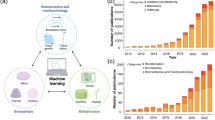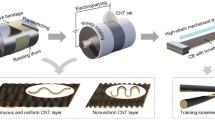We present here an original device and method developed for measuring the resilience–elasticity properties of human cutaneous scars in vivo. The novelty of the device is protected by patent. Examples are presented and results obtained from application of this work in assessing the mechanical properties of cutaneous scars in post-amputation lower limb stumps during medical rehabilitation and prosthetization of patients are discussed.
Similar content being viewed by others
References
Kovaleva, L. N., “Clinical-morphological parallels in patients with scar pathology of the skin,” Dermatovenereol. Kosmetol. Seksopatol., 1, No. 4, 108-117 (2016).
Tosa, M. and Ogawa, R., “Photodynamic therapy for keloids and hypertrophic scars: A review,” Scars Burn Heal., 6, Art. ID: 2059513120932059 (2020).
Manturova, N. E., Talybova, A. M., Kruglova, L. S., and Sten’ko, A. G., “Prevention and treatment of atrophic post-acne scars,” Klinich. Dermatol. Venerol., 17, No. 5, 91-98 (2018).
Dreno, B., Tan, J., Kang, S., Rueda, M.-J., Lozada, V. T., Bettoldi, V., and Layton, A. M., “How people with facial acne scars are perceived in society: An online survey,” Dermatol. Ther. (Heidelb.), 6, No. 2, 207-218 (2016).
Behrangi, E., Goodarzi, A., Roohaninasab, M., Sadeghzadeh- Bazargan, A., Nobari, N. N., and Ghassemi, M., “A review of scar treatment related to acne and burn,” J. Crit. Rev., 7, No. 4, 714-722 (2020).
Cordes, S., Calhoun, K. H., and Quinn, F. B., “Tissue expanders,” UTMB Department of Otolaryngology Grand Rounds [Electronic resource] (1997); http://www.utmb.edu/otoref/grnds/tissue-expand.html (accessed January 10, 2009).
Hendriks, F. M., “Mechanical behaviour of human skin in vivo: A literature review,” Nat. Lab. Unclassified Report 2001/820 [Electronic resource] (2001); www.extra.research.philips.com/publ/rep/nl-ur/NL-UR2001-820.pdf (accessed January 10, 2009).
Facial Plastic and Reconstructive Surgery [Russian translation], A. D. Papel (ed.), BINOM, Moscow (2007), p. 52.
Fedorov, A. E., Samartsev, V. A., and Kirillova, T. A., “The mechanical properties of human skin,” Ross. Zh. Biomekhan., 10, No. 2, 24-42 (2006).
Kurek, M. F., Anichkin, V. V., Shil’ko, S. V., and Doroshenko, R. V., “Mechanical properties of the skin: contractility and extensibility, their interaction, the histological basis, and possibilities for prognosis,” Prob. Zdorov. Ekol., No. 3 (21), 89-94 (2009).
Kurbanova, U. R., Botchaeva, M. S., and Gebenova, A. A., “Alternative methods for the treatment of keloid and hypertrophic scars,” Nauch. Alman., No. 9-2 (47), 71-75 (2018).
Zheng, Y. and Mak, A., “Effective elastic properties for lower limb soft tissues from manual indentation experiment,” IEEET Trans. Rehabil. Eng., 7, No. 3, 257-267 (1999).
Ponomarenko, G. N., Smirnova, L. M., Romanov, V. V., Belyanin, O. L., and Kurganskaya, I. G., “A device for determining skin elasticity and skin scars in humans,” Patent No. 2763843 RU.C1. MPK A61B 5/00 (2021.08), Application March 29, 2021, Published January 11, 2022 Byul., No. 2.
Author information
Authors and Affiliations
Corresponding author
Additional information
Translated from Meditsinskaya Tekhnika, Vol. 56, No. 4, Jul.-Aug., 2022, pp. 8-10.
Rights and permissions
Springer Nature or its licensor (e.g. a society or other partner) holds exclusive rights to this article under a publishing agreement with the author(s) or other rightsholder(s); author self-archiving of the accepted manuscript version of this article is solely governed by the terms of such publishing agreement and applicable law.
About this article
Cite this article
Smirnova, L.M., Ponomarenko, G.N. & Ponomarenko, I.G. A Device and Method for Determining the Resilient and Elastic Properties of Human Cutaneous Scars. Biomed Eng 56, 230–233 (2022). https://doi.org/10.1007/s10527-022-10208-0
Received:
Published:
Issue Date:
DOI: https://doi.org/10.1007/s10527-022-10208-0




